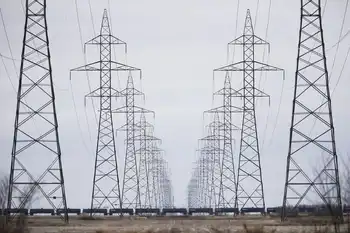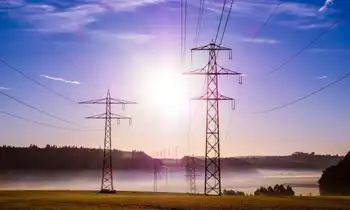Isotope shortage looms after reactor shutdown
By Toronto Star
Substation Relay Protection Training
Our customized live online or in‑person group training can be delivered to your staff at your location.

- Live Online
- 12 hours Instructor-led
- Group Training Available
Atomic Energy of Canada Ltd. says its NRU reactor was shut down May 14 after a power outage in parts of eastern Ontario and western Quebec.
However, a heavy water leak was detected within the facility the following day, and AECL estimates the reactor will be out of service for more than a month while repair options are considered.
The agency says the heavy water is being contained and stored in drums, and there is no threat to workers, the public, the environment or nuclear safety as a result.
The aging facility provides about half the global supply of isotopes used in medical imaging.
AECL says it has enough medical isotopes for the coming week, but will unable to meet demand by May 23.
Dr. Doug Abrams, head of the Canadian Society of Nuclear Medicine, said they'll immediately begin looking at supply options.
"We'll be good for the next week, but the next three weeks will be really difficult after that," said Abrams in an interview from Edmonton.
"It's really going to depend on what other sources can be tapped from Europe."
He said 20 per cent of the Canadian supply comes from Europe and the rest from Chalk River.
He said most of Western Canada is supplied by Europe and is therefore better equipped to handle the shortage.
"Alberta will be fairly well off, but Eastern Canada will be really, really in trouble."
The location of the heavy water leak, estimated to be at a rate of 5 kg an hour, has been identified at the base of the reactor vessel in a location where there is corrosion on the outside wall of the vessel, AECL said in a statement.
Officials with the agency could not be reached for comment.
This is the latest in a series of problems with the 52-year-old reactor over the past two years, which have caused political controversy in Ottawa.
In November 2007, the facility was closed for a few days for routine maintenance.
During that time, the Canadian Nuclear Safety Commission discovered emergency backup power wasn't connected to two pumps which prevent a meltdown.
The nearly month-long shutdown that resulted sparked a critical global shortage of medical isotopes used in the diagnosis and treatment of cancer and heart ailments, and only ended when Parliament voted to bypass the regulator's order.
The prime minister insisted there was no risk of a nuclear accident.
"The government has independent advice indicating there is no safety concern with the reactor," Harper told the Commons in December 2007.
Atomic Energy's then-chairman, Michael Burns, resigned after the fiasco, and the Conservative government later fired commission head Linda Keen for her refusal to authorize the restart.
Keen later sued the federal government over her dismissal.
An expert medical panel convened by Health Minister Tony Clement, which included Abrams, said Canada's nuclear medicine community was "teetering on the brink of disaster" during the shutdown.
Their May 2008 report urged Ottawa to build more facilities to supply medical isotopes to lessen dependence on the aging research reactor.
Abrams said the recent shutdown underscores that recommendation.
The trouble, he said is not Chalk River, but the bottleneck in supply.
"The reactor is aging, so (the shutdown) is not really a surprise. It sounds like it's rather minor. The problem is it takes time to fix them."
There was also a small leak in February, the third such leak since December 2008 at the aging facility.
At the time, an AECL official told a Commons committee that 11 kg of heavy water was ventilated from the reactor after two tiny pin holes were found in a pipe.
A larger leak at the reactor in December was not reported to the public for weeks, prompting allegations of coverup and suggestions the public had been endangered.
However, the head of the nuclear regulator, Michael Binder, told the committee the December leak wasn't reported because it was so small as to be an "almost routine operational issue."
But NDP MP Nathan Cullen said public confidence in the NRU reactor was being damaged.
"The cumulative effect of all these leaks, can this not be a death by a thousand cuts?" asked Cullen.
Federal funding to AECL has nearly tripled since the Harper government came to power in 2006, documents show.
Figures provided by Natural Resources Canada show taxpayers will have poured more than $1.2 billion into AECL during the past fiscal year just ended and the one that began on April 1.
The total includes $574 million for 2009-10.











